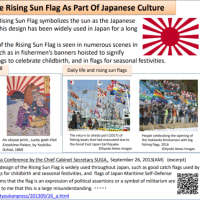男性中心の企業文化が残るなか、被害に遭っても行動に出られない女性が多い。セクハラを受けた女性(全体の42.5%)にその際の対応(複数回答)を尋ねると「我慢した」は相手が社内の場合(以下、社内)で61.3%。相手が社外の場合(以下、社外)は67.7%と7割近くに高まる。
女性らの間に、かえって状況悪化を招きかねないとの懸念が強いとみられる。我慢した理由(複数回答)は「仕事に悪影響が出るから」が社内外を問わず最多。社外は57.8%と6割近くで社内(42.2%)を15ポイント以上引き離す。商談への影響を考え、社内以上に対応に苦慮している。続いて多かったのは、社内・社外ともに「相談しても状況は改善・解消しないと思った」で3割超だ。
過半数が我慢する一方、少数ながら被害を受けて動く人もいる。相手に「直接抗議した」は社内の場合で18.4%。「相談した」は社内・社外ともに24%台だった。
相談した相手(複数回答)は、社内外ともに「会社の同僚」が4割超でトップ(社内49.5%、社外42.4%)。専門的な対応が見込める「会社の相談窓口・担当者」は社内の場合で24.2%。「労働局」は同7.7%だった。
じゃあ、アメリカは、というと
5 Disturbing Sexual Harassment Statistics We Can't Afford to Ignore
Photo Credit: © anyaberkut / Adobe Stock
BY JENNIFER KOZA
READ MORE: Discrimination, Harassment, Sexual Harassment, U.S. Equal Employment Opportunity Commission
1. Forty-five percent of the EEOC’s harassment claims were sex-based.
In FY2015, the EEOC received over 28,000 harassment claims for both private and public employers (e.g. government). A majority of this 45 percent were sex-based claims. Other types of harassment claims included harassment on the basis of race, disability, age, national origin and religion.
While sex-based claims include sexual harassment, gender identity and sexual orientation, a majority of the sex-based harassment claims were due to sexual harassment. Even though many harassment claims go unreported (see below), those that are reported are overwhelmingly due to sexual harassment. If someone is asking for a sexual favor, making any kind of sexual advance or doing anything in a sexual nature at work, it would be considered harassment.
2. At least 25 percent of women experience sexual harassment in the workplace.
Let that sink in. At least one in four women experience sexual harassment in the workplace. And the EEOC’s study found that, in some reports, that number is as high as 85 percent.
The difference in the range of percentages comes from differences in types of sampling and how respondents and/or researchers define the term sexual harassment.
Whether it is 25 percent or 85 percent of women who experience sexual harassment in the workplace, however, it is still a disturbingly high percentage that we can’t ignore.
3. Seventy-five percent of harassment victims experienced retaliation when they reported it.
When reports come out that a person or people have experienced sexual harassment, the most common responses include “Why didn’t she say anything?” or ”Why didn’t she report it?”.
Victim advocates, and anyone who has experienced workplace harassment, know that the most common reason is because they worry that not only will they not be believed, but also that they’ll be fired.
That’s exactly what one study in 2003 found: “75 percent of employees who spoke out against workplace mistreatment faced some form of retaliation.” Other studies show that organizations respond to sexual harassment reports specifically by inaction or minimizing.
These numbers make it clear that workplaces aren’t doing enough to protect employees, particularly women, from reporting harassment.
4. Somewhere between 87 and 94 percent of employees experiencing harassment do not file a formal complaint.
Considering that 75 percent of employees who report harassment experience retaliation, it’s not surprising that many choose not to take any type of formal action against a harasser.
Evidently, hoever, this depends on sexual harassment complaint. Some types of harassing behavior are reported more than others. One study found that sexually coercive behavior is reported about 30 percent of the time, while unwanted physical touching is only report eight percent of the time.
25%ー85%の女性が職場でセクハラを受けた、というが、セクハラを受けた87%ー95%が公式の苦情を申し立てていない、と。セクハラを報告したひとの75%はなんらかの報復にあっている、と。
ーーー女性へのセクハラはなくなってほしいと思うが、しかし、アメリカも褒められたものじゃない。
各国共通の問題、あるいは、アメリカのほうがひどい問題でも、日本のほうがひどい、という記事を書く女性記者たちは頭がどうかしているんじゃないか、と思う。
女性問題を特定の国、文化、民族問題にして、米国、欧米、白人の優越意識を維持・強化させている姿は狂気の沙汰だ。
ダレスが、戦後もっていた、
The Oriental mind, particularly that of the Japanese, was always more devious than the Occidental mind,"
東洋人はー特に、日本人は、西洋人より、邪まだ、という差別意識が、いまだに続いているのである。






















